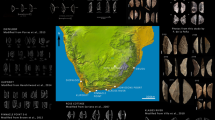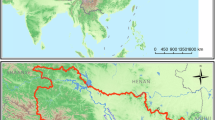Abstract
DURING recent archaeological work in New Guinea and the British Solomon Islands we have recovered simple flake artefacts of obsidian associated with a distinctively decorated pottery known as Lapita ware1. This ware had a wide distribution across the south-west Pacific in the first millenium BC, and is known archaeologically from Watom Island, near Rabaul in New Britain, to Tonga, some 4,000 km to the southwest.
This is a preview of subscription content, access via your institution
Access options
Subscribe to this journal
Receive 51 print issues and online access
$199.00 per year
only $3.90 per issue
Buy this article
- Purchase on SpringerLink
- Instant access to full article PDF
Prices may be subject to local taxes which are calculated during checkout
Similar content being viewed by others
References
Golson, J., Studies in Oceanic Culture History, 2, 67 (B. P. Bishop Museum, Honolulu, 1971).
Key, C. A., Nature, 219, 360 (1968).
Key, C. A., Archaeology and Physical Anthropology in Oceania, 4 (1), 47 (1969).
Ahrens, L. H., and Taylor, S. R., Spectrochemical Analysis (Addison-Wesley, Reading, Massachusetts, 1961).
Author information
Authors and Affiliations
Rights and permissions
About this article
Cite this article
AMBROSE, W., GREEN, R. First Millenium BC Transport of Obsidian from New Britain to the Solomon Islands. Nature 237, 31 (1972). https://doi.org/10.1038/237031a0
Received:
Issue Date:
DOI: https://doi.org/10.1038/237031a0



